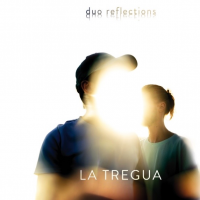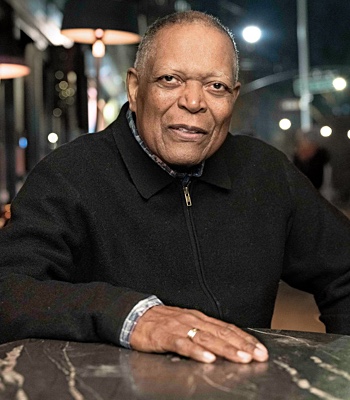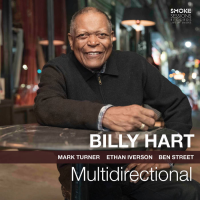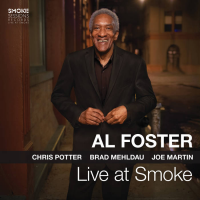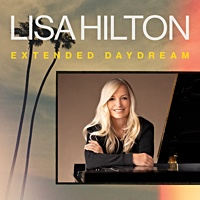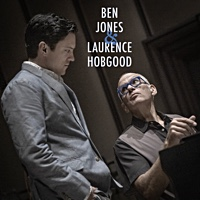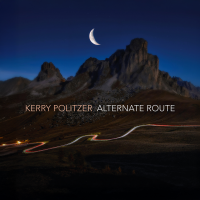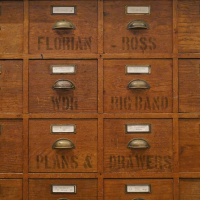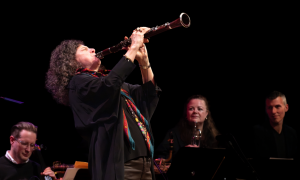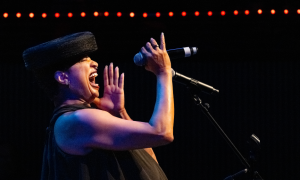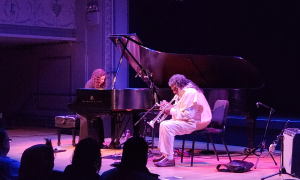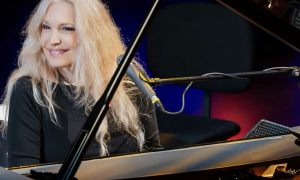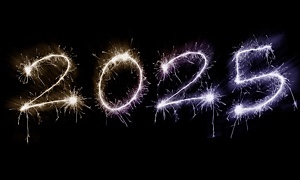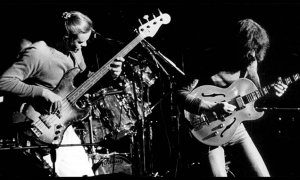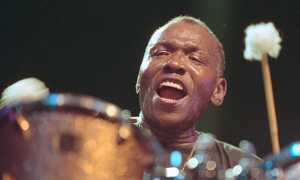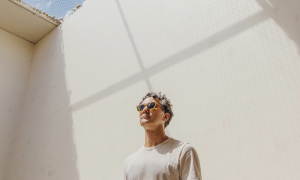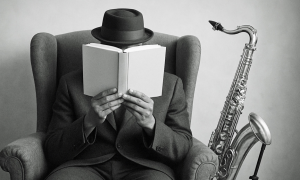Home » Jazz Articles » Live Review » European Jazz Conference 2025: Italian Showcases
European Jazz Conference 2025: Italian Showcases
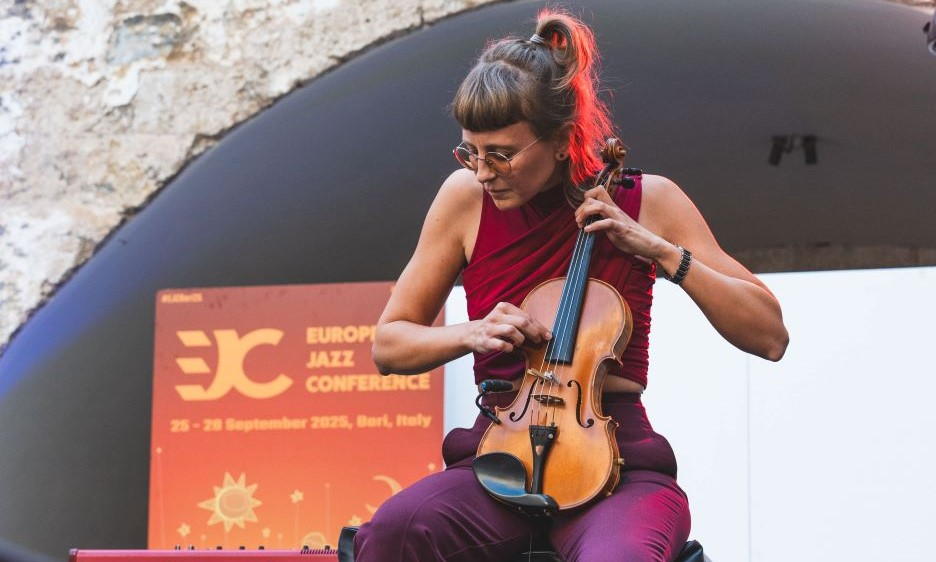
Courtesy Puglia Sounds
Bari served up a feast of Italian—and notably Pugliese—jazz. The jazz scene here is a vibrant and progressive one, boasting great individual character.
Various venues
European Jazz Conference
Bari, Italy
September 26-27, 2025
Jazz rang out in Bari for four days during the Europe Jazz Network's annual European Jazz Conference. It rang out in Bari's streets, piazzas and theatres, and in ancient church and castle too. It may have been an event of note in Bari's cultural calendar, but in a sense this wonderful celebration of jazz was just business as usual for the Europe Jazz Network. After all, its year-round work is driven by music.
For all the EJN's tremendous work—and much of it passes under the radar—it is worth remembering that without the music there would be no EJN. Without jazz there would be no jazz festivals or clubs, no jazz promoters nor agents, no jazz magazines or jazz journalists. The music comes first. Everything else follows in its wake.
Logically, therefore, music promotion—in multiple guises—is the year-round main business of the EJN. The European Jazz Conference, a brief though intense four-day celebration, provides a hefty dose of oil in the organisation's wheels.
The European Jazz Conference 2025 in Bari was co-organized by the EJN and EJN member-organisation Puglia Sounds—a project of Puglia Cultura.
Puglia Sounds is a key part of Puglia Region's strategy for the promotion of culture and heritage. Puglia Region's five-year plan, 2025-2030, will see a 400- million Euro investment to strengthen Puglia's cultural ecosystem and to increase its international visibility. Music promotion, of which jazz is a major component, is an important part of these plans.
For the 400 or so attendees from 40 countries attending the EJC in Bari, the aims of the conference were multiple: networking and creating new partnerships; strengthening existing collaborations; addressing the current issues facing jazz; working to make jazz more inclusive, supporting musicians... the list is a long one. A huge amount of thought and work behind the scenes goes into making the conference a proactive force for the benefit of jazz.
Though essentially a meeting-greeting-discussing kind of gathering, an important component of the EJC is live jazz. Bari 2025 was no exception. The showcase concerts and the concerts of the free-to-the-public fringe program provided a platform for 19 Italian bands to play before many of Europe's most important jazz festival directors and jazz club owners, national jazz organisations, independent music promotion companies and jazz journalists.
In Bari, the historic port city of Puglia, southern Italy, music was everywhere during four days of a warm and sunny weekend. On Thursday evening, by way of a musical antipasto before the main menu, the narrow streets and squares of the old town and Murat district hosted concerts by students of the Niccolò Piccinni Conservatory—named after the 18th-century Baresi opera composer—and the Pentagramma music school.
The outdoor gigs were uplifting, with a festive atmosphere the norm. The indoor venues for the main showcase concerts and fringe programme concerts were spectacular. There was the mid-19th-century Teatro Piccinni with its Doric columns and frescoed ceiling. Unforgettable, the Norman-era Castello Svevo, hugging the coast. Fringe concerts were artfully framed in the Auditorium Diocesano Vallisa—a beautifully restored Medieval church set in the cobblestone streets of the old town—and in the Art-Nouveau theater Kurasal Santalucia.
Friday, 26 September: Teatro Piccinni
Camilla Battaglia 'ELEkTRA'
Vocalist and composer Camilla Battaglia's quintet seemed traditional in that its composition of drums, double bass, piano and guitar follows many similar exemplars in the history of jazz. The music, however, was anything but traditional, at least in jazz terms. Alt-rock? Indie pop? Experimental nu-jazz? A little of all these tags applied, at varying times, to music of unpredictable though engaging contours.Battaglia's background, however, is most definitely jazz. A former member of Italy's National Youth Jazz Orchestra (alongside fellow EJC-showcase artists Anais Drago and Federica Michisanti), Battaglia took a degree in philosophy followed by studies in the vocal arts at Siena Jazz University. At this prestigious institution—a jewel in the Tuscany hills—Battaglia currently teaches improvisation and repertoire. To these honors Battaglia added a master's degree in performance and composition from Copenhagen.
It says much for her talent and ambition that her first albums as a young leader featured guest musicians David Binney and Ambrose Akinmusire.
Yet rather than fall back on time-honored jazz tropes, Battaglia has embraced a progressive, modernist aesthetic that eschews strict stylistic boundaries. As this 30-minute performance demonstrated, Battaglia's musical language owes almost as much to philosophy and poetry as any musical idiom. Her compositions, inspired by inspirational female figures from mythology, history and literature, were a potent blend of formal structures and individual freedom.
In drummer Francesca Remigi, double bassist Stefano Dalla Porta and pianist/keyboardist Simone Graziano, Battaglia had a solid yet flexible rhythm section. Guitarist Francesco Fiorenzani took one measured solo but generally exercised a bigger role as a sound sculptor of atmospheric textures. Remigi commanded her kit with an impressive rhythmic agility, with Fiorenzani oscillating between supportive and driving roles.
Front and center was Battaglia. Her vocals toggled between melodious seduction and piercing release. One sustained note sailed powerfully out into the auditorium—suspended for close to thirty seconds. Influences in Battaglia's approach and delivery were elusive, but in her genre-slippery modernism Björk seemed like one concrete reference point.
The short set, culled from Battaglia's album ELEkTRA (Ropeadope, 2024), concluded with "Can You see Me?," a potent slow burner whose lyrics suddenly stood out in sharp relief when the singer unfolded a Palestinian flag. "Can you see me?" she sang. "Can you hear me cry? Won't you hear my voice?"
In 2018, when the European Jazz Conference was last in Italy, in Novara, Battaglia performed as part of the New Generation program. Now, through her teaching role and through her performative example, she is helping nurture the singers of the younger generation following her path. And they are fortunate, for Battaglia is a unique voice in Italy's contemporary music scene. And a bold one.
Castello Svevo Cortile
VMV Trio
Sunshine bathed the courtyard of Castello Svevo, Bari's emblematic 11th-century fortress. It was a handsome setting for the Friday afternoon showcases. But coming immediately after a series of 90-minute discussion groups, the overwhelming desire to stretch legs, imbibe brain-reviving black coffee and sweet local pastries, and the imperative to socialize/network meant that VMV Trio had to contend with intrusive background chatter that played hell with the ancient arena's acoustics.Alto saxophonist Vincenzo Di Gioia, guitarist Marco Cutillo and drummer Vito Tenzone are old hands at this sort of thing; finalists of the Conad Jazz Contest at Umbria Jazz, 2024, VMV Trio took first prize in both the Teanno Jazz and the Tomorrow's Jazz contests. To strike like lightening once might be lucky, but twice?
Flying the local flag, the three musicians met on the jazz course at the Conservatory in Bari. They formed VMV Trio in 2023 and honed their live chops in venues like Bari's Duke's Jazz Club. Their debut EP, From Now On (FDS Records, 2024), followed quickly. It provided the afternoon's set list. Writing duties in VMV are shared—with influences ranging from jazz and rock to the film music of Ennio Morricone, John Carpenter and Hans Zimmer. From these sources, VMV have crafted a personal sound—atmospheric, lyrical and persuasive.
"Missing Piece" set a template of sorts—Cutillo's circular guitar motif underpinning Gioia's more expansive melodic pastures and Tenzone's gradually escalating rhythms. As Di Gioia stretched out, collective lift-off was dangled tantalizingly, but with the same incremental steps they set off with, the trio instead receded into pensive meditation that petered out. "Film" transitioned from bittersweet melancholy—guitar arpeggio, sotto voce drums and softly questing alto—to collective release and back again. There was smoldering intensity from the offing on "Outrage," with Cutillo and then Di Gioia stretching out over Tenzone's fevered rhythms. With the steam vented, the trio eased back and negotiated a soft landing. A trio to keep an eye on.
Anais Drago 'Relevé'
Piedmontese violinist Anais Drago caught jazz critics' attention with her debut album Anais Drago And The Jellyfish (Another Music Records, 2018)—reworkings of and expansions on musical ideas by Frank Zappa. Since then, Drago has featured in prestigious Rising Star polls and toured internationally as a solo performer. In 2024 she took first prize in the Zbigniew Seifert International Jazz Violin Competition, a year in which she also released Shake Your Duty (Parco della Musica Records, 2024)—an even deeper dive into Zappa's particular sonic universe.For this EJC showcase performance Drago, clarinetist Federico Calcagno and drummer Massimiliano Trabucco played a selection of compositions from Relevé (Habitable Records, 2025).
Rhythm was central to Drago and the trio's modus operandum from the get-go. On "La Battaglia" honking clarinet, dry-sounding metallic impetus and the leader's energized plucking combined to fashion an abstract-funk groove. Segueing smoothly into "Corto Circuito"—Drago and Calcagno stirred the pot with free-wheeling flights. The violinist gyrated and bobbed to the music's pull, her classical-flavored melodicism a nod to her conservatory education.
But Drago is clearly a musical sponge who has also absorbed alt-rock, minimalism, global folk accents (notably gypsy jazz), jazz and avant-garde colors in equal measure. Folksy strains arose from the violinist's peg-manipulated strings like slowly curling smoke on "Light Blue Door"—one foot working the pedal board to conjure warped electronic jiggery pokery that drove the music into more overtly experimental areas. The hedonistic rhythms and spiraling melodic lines of "Balkan Nugget" could have provided an alternative soundtrack to an Emir Kusturica film.
The space that Calcagno enjoyed to lead opened another sort of space for Drago in which to thrum and thrash sawing rhythms and cutting pizzicato. Explosive, nerve-shredding and danceable all at once, Anais Drago's Relevé trio does for the jazz violin trio what The Velvet Underground did for rock.
Bring Your Horn
In music there is no adventure like real-time adventure—improvisation from first note to last. This was the proposal of Bring Your Horn, the trio of tenor saxophonist Emanuele Coluccia, keyboardist Filippo Bubbico and drummer Alberto Manco. Collectively, these musicians—multi-instrumentalists all—have collaborated with a broad cross-section of Italy's finest jazz musicians, including Aldo Bagnoni, Nicola Conte, Enrico Rava, Stefano Rielli, Angelo Mastronardi, Alberto Zacà and Davide Codazzo.The trio embarked with Coluccia probing on alto saxophonist as Bubbico drew Gothic hymnal colors from two keyboards and Manco worked his cymbals briskly. Swiftly, Coluccia switched to tenor saxophone, the instrument's darker tones complimenting Bubbico's brooding atmospherics. The saxophonist's keening legato lines seemed poised to soar, and with the background chatter ploughing determinedly on, it would have been understandable if Bring Your Horn had opted to jump a few gears and go full-on free-jazz explosion in response. Instead, with brushes-steered tranquility, they brought the music down to a level just above a meditative whisper.
When Coluccia swapped his tenor once more for soprano, and when Manco's brushes gave way to rumbling mallets the music slowly began to swell. In the growing tumult, as saxophonist and drummer pushed and pulled, Bubbico's keys became more prominent as a quasi-drone like presence. The contrast between his calm though dark-hued impressionism and the fires stoked by Coluccia and Manco was striking. In observance of the old showbiz adage, Bring Your Horn left the more attentive in the audience wanting more.
Auditorium Diocesano Vallisa
Zoe Pia & Le Sculture Sonanti
It is a long way from Mozart to playing a clarinet embedded in ceramic, or from big-band jazz to solo performances of shamanistic leanings, but Zoe Pia is no run-of-the-mill musician. Conservatory studies in Cagliari and Rovigo provided the technical grounding, but no amount of formal education can produce a musical imagination as fertile as Pia's.Shakers and bells set the tone, Pia toggling back and forth between them before placing her arms through the percussive instruments' straps. With the launeddas, a traditional Sardinia triple-pipe instrument, Pia drew bagpipe-like sonorities—all the while accompanied by the irregular though steady accompaniment of tinkling bells. The addition of a smaller, fourth pipe lent greater harmonic depth, the ancient timbres filtered through pedals and brought into the 21st century. A recording of chanting voices, first male and then female heightened the sense of ritual invocation or animistic ceremony.
A clarinet embedded in ceramic? This sculptural instrument, designed by Luca Zarattini, may have looked otherworldly, but the sound it emitted seemed conventional enough. Perhaps the magma-like cover affected the clarinet's overtones to a degree as Pia blew a gently mazy course. Or it might have been the small church's natural acoustics working their magic—either way, the effect was hypnotizing.
Only in the final ten minutes did Pia usher in more dynamic braying and crying sounds from the clarinet and skronky-folk from the electronically altered launeddas. Pia left the audience with two words, the only two she had uttered during her performance: "Free Palestine."
Federica Michisanti Trio
Since her drummerless trio recording ISK (Filibusta Records, 2016) bassist Federica Michisanti's upward trajectory has continued to be marked by restless creativity. The Roman bassist has toured in a quartet with Dave Douglas Franco D'Andrea and Dan Weiss and played in a duo with violinist Dominique Pifarély. But it is her own albums such as em>Horn Trio (Parco Della Music, 2020) with tenor saxophonist Francesco Bigoni and trumpeter Francesco Lento, and Afternoons (Parco della Musica, 2023) with Louis Sclavis, Vincent Courtois and Michele Rabbia that encapsulate her forward-looking ethos.For the EJC fringe program Michisanti unveiled a new project—a trio with vibraphonist Gianluca Manfredonia and drummer Alessandro Marzi. In a set that just flew by the trio demonstrated a keen understanding. The leader—on double bass—and Marzi plied unhurried though deeply swinging grooves, creating the space and inviting rhythmic impetus for Manfredonia to improvise with bags of freedom.
With two mallets per hand, Manfredonia gave a virtuoso exhibition on the opening number—his speed matched by a startling clarity. The dancing quality in his play was irrisitible. The same could be said for Michisanti and Marzi, whose laid-back groove and telling accents contrasted with Manfredonia's bustle and boppish flow—a juxtaposition that engendered a delightful tension. Michisanti's medium tempo walking bass projected greater urgency on the second number, the bassist's lithe solo to cymbal accompaniment the song's highlight. Two more compositions underlined Michisanti's writing chops, where noirish and dreamy ambiance, gravity-altering shifts in tempi, tumbling solos and dramatic finales made for a carousel of colors and emotions.
Sliders
Three of anything in musical terms is rare. A trio of trombonists? We are talking hen's teeth! Though Filippo Vignato, Federico Pierantoni and Lorenzo Manfredini first locked slides and bells in 2018, it took six years to birth their eponymous debut album (Hora Records, 2024). The majority of the seventeen compositions are originals, with covers of tunes by Duke Ellington, Egberto Gismonti, John Coltrane and Carla Bley.It was with Bley's much-covered "Ida Lupino" that the trio began—a lush convergence of three-way harmonies, riffing groove and melodic improvisation. On "Tammora," two mutes and one open bell provided contrasting textures, an unrelenting mantra-like groove underpinning playful, overlapping improvisations. A melancholic polyphony imbued "Ionen," unison riff and counter riff coursed through the punchy "Un estate al mare," while hymnal solemnity colored the set-closer, "Earth Echo." A unique, winning formula that forges an imaginative new path in jazz.
Alberto Parmegiani 'Millenium' featuring Angela Esmeralda
Closing the Friday-night fringe program at Auditorium Diocesano Vallisa was the quintet of Baresi guitarist Alberto Parmegiani—a figure on the Italian jazz scene since the late '80s. The roots of his Millenium project go back to Under A Shimmering Grace (2015) and the guitarist's exploration of Afro-American jazz and its contemporary tributaries.Parmegiani's tunes perhaps owed a debt to Pat Metheny's now-defunct group, both in the arc of the Italian's melodic soloing and in the prominent role of Domenico Sanna on piano and electric keys. On a bluesy number, driven by double bassist Giulio Sciatico's and drummer Cesare Mangiocavallo's swinging groove, Parmegiani's fluid lines placed him in a lineage from Wes Montgomery to John Scofield. Bright, bluesy solos from Mangiocavallo and Sciatico brought the quintet back to the head.
The arrival of singer Angela Esmeralda signaled a fork in the music down a more contemporary path, with dreamy Rhodes textures and pedal- altered guitar dynamics initially to the fore. A lyrical intervention from Sciatico was followed by a soaring improvisation from Esmeralda, who poured her heart into an impassioned flight. The musicians took their bows to warm applause from the small but appreciative audience.
Saturday, 27 September: Castello Svevo Cortile
Matteo Bortone 'No Land's
Otranto-born bassist Matteo Bortone earned a Jazz Master's degree at the Conservatoire National Superieur in Paris. It follows that his formative ensembles have been Franco-Italian affairs. An award-winning musician, Bortone has collaborated with Roberto Gatto, Olivia Trummer, Tigran Hamasyan and Ralph Alessi. This project is the fruit of a 2019 commission by the festivals Novara Jazz and Südtirol Jazz Alto Adige, which resulted in the album No Land's (Auand, 2020)—a two-horns, electro-acoustic outing that referenced progressive rock and electronica as much as jazz.Five years on, Matteo Bartone No Land's—the group's nom de guerre—released its second album, A Tree in the Mist (Onze Heures Onze, 2025). Saxophonist Julien Potvianne, guitarist Benjamin Garson, Rhodes-cum-synthesizer player Yannick Lestra and drummer Ariel Tessier remain from the original sextet.
From dreamy saxophone and Rhodes-led soundscapes to dense prog-rock-cum-jazz fusion weave, and from spikey guitar-driven attack to spacious luminosity, the music morphed this way and that. At its most ethereal, as on "Sud Sud East" and the hypnotic "Okra" the music evoked something of the spirit of Danish group Girls In Airports, but any such similarities were fleeting. On the final piece, "White Count," meditative melodicism contrasted with unwavering rhythmic pulses, bringing to mind Joe Zawinul's mantra "everybody solos, nobody solos." A captivating set from one of the most singular bands on the Italian scene.
EJN Zenith Award Winner: SC'ÖÖF:
Back in Teatro Piccinni, the stage was set for a special showcase. Since 2019, the Europe Jazz Network's Zenith Award has recognized emerging jazz talent. The prize, in collaboration with Improvised Music Company's 12 Points Festival and with the support of Creative Europe, gives the winners the opportunity to tour within Europe, plus a showcase slot before 400 industry professionals at the EJC. The international jury, comprised of festival directors from the EJN ranks had this to say about SC'ÖÖF:"SC'ÖÖF creates imaginative soundscapes with a conglomerate of sounds traversing between computer generated pulses and acoustic bursts of expression, all meticulously orchestrated into an original sound. Their musical stories are rooted in the industrial realm, but yet the group produce an overall organic, human-like fluent feel. The outcome is a percussive, rhythmically unpredictable, melodically compelling experimental jazz-dub-d'n'b-breakbeat-hip hop-noise set that exudes great musicianship, boldly taking on the freedom of expression."
A lot to get your head around—on paper anyway. In the flesh, SC'ÖÖF is Elio Amberg (saxophone and electronics), Noah Arnold (saxophone), Christian Zemp (guitar and electronics), Vincent Glanzmann (drums and laptop), with audio engineer and sound designer Jonas Häni operating from the back of the hall. In the event, the band appeared without guitarist Zemp, who had stayed at home for the birth of his first child.
Bravely, the other members of SC'ÖÖF went ahead, despite the handicap of missing an integral member. This spirit of adventure, improvising with the tools at hand, was very much in the spirit of jazz. Passages of unison play, riffing and harmonizing between the saxophones felt abstract and improvised, while the frequent visual communication between the laptop-tethered Glanzman and sound designer Häni underlined the in-the-moment nature of the performance. Likewise, Glanzman's orchestrating of the saxophones, even in the midst of their interwoven free-jazz skronk, was an indication of spontaneity.
However, much of the music could best be described as industrial noise. It was not the ambient lap-top sounds, nor the MIDI-filtered saxophone effects. Nor was it the repetitive, mechanized rhythms that prevailed. Rather, it was the ear-splitting volume of the music that was its single greatest defining character. So loud was the volume that the floor of the Teatro Piccinni shook. You could feel the vibrations in your legs and your throat. It was too much for some, with a number of people exiting the hall.
The noise level was too much for those wearing hearing aids. Afterwards, one EJN member wondered if such volume might be dangerous for someone with a pacemaker, or a stoma. "It hurt me." commented another. "Music shouldn't hurt you physically. I thought my eardrums were going to burst." There was enough applause and there were enough whoops from the audience to suggest that SC'ÖÖF's improvised set had gone down well a good proportion of the audience. Still, the volume felt excessive and an unnecessary distraction from the singular creativity on stage. Ear plugs should have been available for those who wanted them.
In 1988, Wynton Marsalis toured a number of European jazz festivals, policing the number of jazz bands on the programs. Only two out of ten, he concluded, passed his jazz test. Two decades later, AAJ's John Kelman also wrote critically—though with a touch more nuance—on the programming choices of jazz festivals. Sadly, Mr. Kelman is no longer with us. Marsalis, on the other hand, would have kittens if he came across SC'ÖÖF. That is if his poor old ears could tolerate the volume.
Esmeralda Sella
Ravenna pianist and composer Esmeralda Sella, double bassist Federico Giolito and drummer Giovanni Nardiello are all graduates of Siena Jazz Academy. Sella's compositions, nurtured over a period of years were released on Magma (Jazz Engine/Auand, 2025)—her debut as leader. The short but memorable set drew from that album, but offered much more besides, with attention to staging an evidently important part of her craft.Seven vertical red strip lights, evenly spaced, shone brightly behind the musicians. A text projected poetry onto a large screen. The music began with Sella working the piano strings with mallets. Percussive intensity was a feature of her playing. Roiling drums, crashing cymbals and rumbling bass responded in a stormy opening. From the left wing, a figure (Pooriya Sepehrara) entered the stage beneath a black cloth, his features outlined as he slowly pulled this long shroud behind him—as if in slow motion. Bowed bass drone and Nardiello's metallic rustling accompanied the unfolding theatre.
In Sella's playing, economy and dynamism went hand in hand. Her deft lyricism, edged with angularity, was delivered in a chain of short staccato phrases that stubbornly resisted greater flow. Repeating motifs swirled as drums and bass pursued a no less knotty course. The greatest drama, however, came with the return of Sepehrara to the stage. He delivered an aching song in Farsi to minimalist accompaniment, before Sella covered him with a silky, Bible-black cloth. A pounding piano-and- bass pulse punctuated by explosive bursts from Nardiello, was the backdrop to a dance macabre. His form mutated by the dark shroud, Sepherara pulled spikey shapes in every direction as he punched, stretched and windmilled with a frenetic energy. All the while the music pulsed with menacing undertones. This was physical and sonic metaphor of potent design.
Afterwards Sella explained that the last track was title "Rafah"—her emotive response to the death of a child in Gaza. Iranian artist Sepherara added that his dance concept was born at the time of the Iranian protest movement that began in late 2022. The aching lullaby that he had sung earlier was a dedication to all the mothers who have lost children, not just in Gaza and the Middle East, but around the world. "Of course, it was full of anger and unspoken words," he stated simply.
Matteo Paggi 'Giraffe'
Trombonist Matteo Paggi came to wider attention in the quintet of Enrico Rava that recorded Fearless Five (Parco della Music, 2024). Yet the Fiuminata-born Paggi had been making waves for some time, in the acoustic-electronica duo Diasilla, with Matteo Stella, and with the international trio Morgenbarn, alongside drummer Tilo Weber and saxophonist Maria Faust. At the EJC Piaggi presented music from Giraffe (Jam/Unjam, 2025), a vehicle for his own compositions.Having just arrived from Spain, Paggi admitted that the band were exhausted, but you would never have known it from the energy the quintet invested in its vibrant showcase performance. With minimal preamble the quintet launched into an epic suite-like performance of 35-minutes duration. There was a concerto-like progression to the music's ebb and flow, with pianist Vittorio Solimene bassist Jonathon Ho and drummer Said Vroon playing with elastic vitality, dropping in and out as sub-chapters highlighting duets or unaccompanied solos held forth.
The lion's share of the solos went to Paggi and saxophonist Lorenzo Simoni. Rarely does a trombone hold its own with a wailing saxophonist, but Paggi is no ordinary trombonist—his force and flair were something to behold. Their harmonizing, free-improvised exchanges and quasi-classical contrapuntal lines contained a universe of emotions.
When in full flow, with punchy rhythmic grooves carrying fiery solos, the quintet proved exhilarating. But equally compelling were the quieter sections where rhythm ceded ground for meditative, even abstract exploration. From these calmer pockets, a piano vamp or a slow drumbeat would reignite the engine, gradually fueling irrisitible groove and escalating passions. Blues and swing came in and out just as organically as the freer or more cerebral moments. But while the collective vocabulary was extensive, the language was personal. An exhilarating contemporary ensemble of personal stamp.
Piazza del Ferrarese
Artchipel Orchestra
It was fitting that Artchipel Orchestra should have the honor of sounding the final notes of EJC 2025. Founded in 2010 by its artistic director and arranger Ferdinando Farao, Artchipel Orchestra was voted the Best Italian Jazz Band in 2012 and 2017 by the long-running Musica Jazz magazine. On albums like Never Odd Or Even (Music Center, 2012), with arrangements of works by Alan Gowen, Dave Stewart, Fred Frith and Mike Westbrook, Play Soft Machine (Musica Jazz, 2014), and Officine Mengelberg (Musica Jazz, 2025) Faraò has demonstrated a keen talent for reinvention.The setting for the closing concert was Pizza del Ferrarese. Dating to the early 17th century, the square faces the old port and abuts the narrow streets of Bari's bustling old quarter. With its Roman flagstones and handsome Baroque buildings, this historic square was the ideal location to attract a bumper crowd for a free concert on a warm evening.
With the special participation of soprano saxophonist Roberto Ottaviano, trombonist Gianluca Petrella and violinist Luisiana Lorusso the ranks of Artchipel Orchestra had swollen to 19. The set got underway with "Manamolela," an infectious Bantu folk song. Electric bassist Gianluca Alberti maintained a tireless ostinato—the bedrock for riffing horns and terrific solos by Carlo Nicita on flute, and by vibraphonist Luca Gusella. Vocalist Serena Ferrara's intermittent African chant pointed to the music's DNA.
A barnstorming arrangement by Ottaviano of Frank Zappa's "The Grand Wazoo" saw extended solos by Ottaviano, Petrella and a wordless vocal-cum-violin turn by Lorusso—all of which ignited the crowd's applause. Equally engaging was Faraò's arrangement of another Zappa classic, "King Kong." Solos in general were not in short supply, but it was the collective roar of the Artchipel Orchestra in full flight that really got the juices flowing. Passionate, stormy renditions of Hugh Hopper/Soft Machine's "Facelift" and Faraò's pulsating "Big Orange" rounded out a memorable performance. Throughout, Ferdinando Faraò's animated direction saw its reflection in the orchestra's full-blooded commitment—a contract that was clearly appreciated by the responsive crowd filling Piazza del Ferrarese.
Wrap-up
The EJC 2025 in Bari served up a feast of Italian—and notably Pugliese—jazz. There were a few older heads in established artists like Roberto Ottaviano, Gianluca Petrella, Nicola Conte and Ferdinando Faraò, but in the main it was youth that dominated proceedings. The organizers decision to include students of Bari's Niccolò Piccinni Conservatory and the Pentagramma music school in street concerts was a sage one—providing platforms for these young musicians can only be inspiring and motivating for them. The musicians on the main showcase stages and on the fringe stages were much closer to the beginning of their respective careers than to the middle or the end. They proved that the Italian jazz scene is a vibrant and progressive one, boasting great individual character.Tags
PREVIOUS / NEXT
Support All About Jazz
 All About Jazz has been a pillar of jazz since 1995, championing it as an art form and, more importantly, supporting the musicians who make it. Our enduring commitment has made "AAJ" one of the most culturally important websites of its kind, read by hundreds of thousands of fans, musicians and industry figures every month.
All About Jazz has been a pillar of jazz since 1995, championing it as an art form and, more importantly, supporting the musicians who make it. Our enduring commitment has made "AAJ" one of the most culturally important websites of its kind, read by hundreds of thousands of fans, musicians and industry figures every month.




